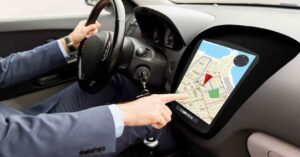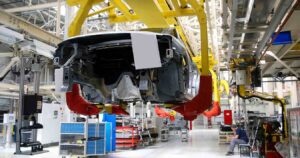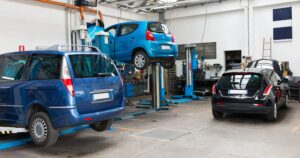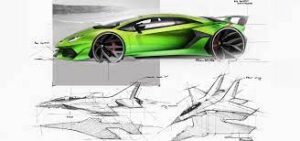Table of Contents
ToggleWhat is Autonomous Driving Technology?
Autonomous driving technology, also known as self-driving technology, refers to the use of computer systems and software to control a vehicle without the need for human intervention.
The goal of autonomous driving technology is to create vehicles that can safely navigate roads and traffic without human input, making transportation more efficient and reducing the risk of accidents caused by human error.
The technology used in autonomous vehicles typically includes a combination of sensors, such as cameras, lidar, radar, and ultrasonic sensors, which are used to gather information about the vehicle’s environment.
This information is then processed by a computer system, which uses algorithms and machine learning techniques to make decisions about how the vehicle should respond to its environment.

There are different levels of autonomy in autonomous driving technology, with Level 0 being no automation and Level 5 being fully autonomous. Most of the autonomous vehicles in development today are at Level 2 or Level 3, which means that they are capable of some autonomous driving functions but still require human intervention in certain situations.
The technology is still under development and testing, and it is not yet widely available for consumers. However, there are several companies, including Tesla, Waymo, and Cruise, that are currently testing autonomous vehicles on public roads, and there are several other companies working on the development of autonomous driving technology.
History of Autonomous Driving Technology
The history of autonomous driving technology can be traced back to the early 20th century, when researchers first began exploring the use of technology to control vehicles. In the 1920s and 1930s, researchers at the Massachusetts Institute of Technology (MIT) began experimenting with the use of radio control to remotely operate vehicles.
In the 1950s and 1960s, the United States Department of Defense began funding research on autonomous vehicles as a way to improve the efficiency and safety of military transportation. This research led to the development of the first autonomous vehicles, which were primarily used for military and industrial applications.
In the 1980s and 1990s, the focus of autonomous driving technology shifted towards the development of systems that could be used in consumer vehicles. During this time, several car manufacturers began experimenting with the use of sensors and computer systems to improve the safety of their vehicles.
In the 2000s, the development of autonomous driving technology accelerated with the advent of new technologies such as GPS, sensors, and machine learning. Google began testing autonomous vehicles on public roads in 2010, and since then, several other companies, including Tesla, Waymo, and Cruise, have also begun testing autonomous vehicles.
Currently, autonomous driving technology is still under development and testing. But many companies are working on developing this technology which in the future will bring significant change in the transportation industry.
There are different levels of autonomy and many companies are developing vehicles that can operate at different levels of autonomy, from Level 2, which requires human supervision, to Level 5, which is fully autonomous.
Autonomous Driving Technology; How Do Self-Driving Cars Work?
Autonomous driving technology, also known as self-driving technology, uses a combination of sensors, computer systems, and software to control a vehicle without the need for human intervention.
The goal of autonomous driving technology is to create vehicles that can safely navigate roads and traffic without human input, making transportation more efficient and reducing the risk of accidents caused by human error.
The technology used in autonomous vehicles typically includes a combination of sensors, such as cameras, lidar, radar, and ultrasonic sensors. These sensors are used to gather information about the vehicle’s environment, including the location of other vehicles, pedestrians, and obstacles.
The information gathered by the sensors is then processed by a computer system, which uses algorithms and machine learning techniques to make decisions about how the vehicle should respond to its environment.
The computer system in an autonomous vehicle is responsible for making decisions about how the vehicle should navigate the road. This includes decisions about speed, braking, and steering. The computer system also uses data from the sensors to understand the vehicle’s environment and predict what other vehicles, pedestrians, and obstacles might do next.
In addition to the computer system, autonomous vehicles also have a number of other components that are necessary for them to function. These include a power source, such as a battery or gasoline engine, as well as a system of actuators, which are responsible for controlling the vehicle’s speed and direction.
Autonomous Driving Technology: Impact on the Car Industry
The development of autonomous driving technology is expected to have a significant impact on the car industry. The most obvious impact will be on the way vehicles are designed and manufactured, as car companies will need to develop vehicles that are specifically designed for autonomous operation.
This will likely include changes to the vehicle’s power source, as well as the addition of sensors and other technologies that are necessary for autonomous operation.
Another major impact of autonomous driving technology on the car industry is that it will change the way vehicles are used. Autonomous vehicles will be able to drive themselves, which means that they will not need a human driver.
This will open up new opportunities for car-sharing and ride-hailing services, as well as for the delivery of goods. It could also lead to a decrease in the number of vehicles on the road, as people may be less likely to own a vehicle if they can easily hail a ride from an autonomous vehicle.
Additionally, autonomous driving technology will also have a profound impact on the way we think about transportation. With self-driving vehicles, people will be able to spend their time in the car doing other things, such as working, reading or relaxing.
This could change the way we think about commuting and travel in general, as people may be less likely to view it as a necessary chore and more as an opportunity to be productive or relax.
Overall, autonomous driving technology has the potential to revolutionize the car industry, making transportation safer, more efficient, and more convenient.
While the technology is still in the early stages of development, it is likely that we will see significant changes to the way vehicles are designed, manufactured, and used in the coming years.
Related Posts and Links
- Electric Cars and Hybrid Cars: 10 Differences and Facts
- Find The Best Affordable EV Cars in 2023
- Impact of Autonomous Vehicles on Auto Industry – WardsAuto























